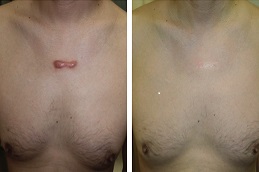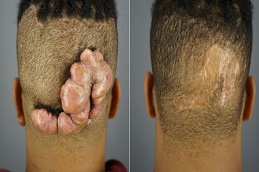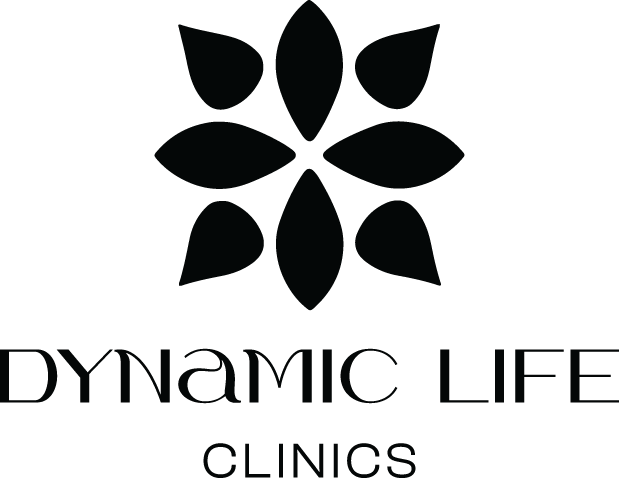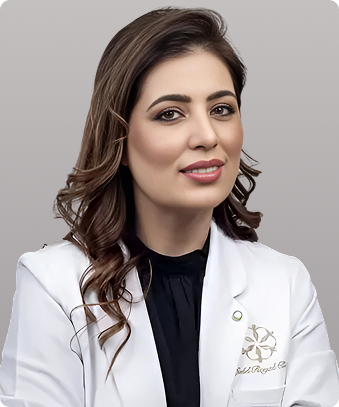
Your Keloid Treatment Snapshot!
Starting Price: From 999 AED per session (final cost depends on size and number of keloids)
Treatment Options Available: Corticosteroid injections, Laser therapy, Cryotherapy, Surgical removal
Reviewed By: Dr. Naba Abdur Raheem and Sania Awais, DHA-Licensed Dermatologists
Consultation Fee: Free initial consultation for a limited period
Best Season in Dubai: Winter and early spring
Best Candidates: Men and women with raised, thickened scars or keloid growths
Anesthesia Used: Topical or local anesthesia (depending on the procedure)
Treatment Duration: 30–60 minutes per session
Hospital Stay: Not required (instant procedure)
Downtime: Minimal, depending on treatment type (usually 1–3 days)
Pain Level: Mild discomfort; well-managed with numbing methods
Results Visible: Gradual flattening and fading seen in 3 weeks
Sessions Required: 2–6 sessions spaced 3–4 weeks apart
Common Treatment Areas: Ears, chest, shoulders, jawline, back, and post-surgical scars
All About Keloids and Their Formation:
A keloid is a pinkish or reddish scar that grows above the surface of the skin, resulting in rashes and itching. Scars are easily noticeable on our bodies, but when the tissue of the scar expands abnormally, it is called a keloid. The following are the features of keloids.
- Size: Extend beyond the original wound boundaries.
- Elevation: Raised above the surrounding skin.
- Texture: Firm, rubbery, or hard.
- Color: Can be pink, red, brown, or purplish.
- Surface: Often shiny and hairless.
- Symptoms: May be itchy, painful, or tender.
- Common locations: Earlobes, shoulders, chest, upper back, and neck.
Keloid Treatment in Dubai:
A range of keloid treatments is available at Dynamic Life Clinics that reduce the symptoms of existing keloids and prevent their recurrence. These treatments aim to lessen the height of scar tissue, but a long-term plan is required. Our most beneficial keloid injection treatment is the Kenalog injection because it suppresses keloid cells and inflammation. Other popular treatment options are surgery, laser therapy, and cryotherapy.
What influences the formation of keloids?
Keloids are commonly popular in individuals with darker skin tones of Asian and African descent. Another major reason is family history, like if your mother or father is facing keloids, then most probably they will also occur in your body. Other factors include tension in the skin, excessive collagen production, humidity, and hormones.
Why do patients choose Dubai for Keloid Removal?
Clinics in Dubai offer a range of evidence-based keloid treatments under the assistance of world-class dermatologists. Board-certified dermatologists provide comprehensive treatment plans to treat complex cases without any chance of complications. Moreover, there is a high degree of privacy and luxury in Dubai, so that you can get your treatment done in a stress-free environment.
Keloid Removal Pricing in 2025:
Keloid treatment cost starts from 999 AED and goes up according to the specific type of treatment. Our dermatologists will check your keloid, determine the exact treatment plan, and then give you complete pricing details.
| Treatment | Cost |
| Keloid Injection | 999 AED |
| Laser treatment | 1250 AED |
| Cryotherapy | 1200 AED |
| Surgical removal | 5000 AED |
Variables affecting the final price:
- Type of procedure
- Size and volume of the keloid
- Skin tone of the candidate
- Body location
- Recurrence history of keloid
Cost comparison vs. alternatives:
| Keloid removal starting | Mole removal starting |
| 999 AED | 699 AED |
Who can safely remove their keloids?
- Keloid condition: small, immature, and symptomatic
- Age: 10+
- Body locations: Full Body
Note: Individuals with active skin infections and a strong family history of keloids should avoid this treatment.
Ear Keloids vs. Chest/Back Keloids:
| Feature | Ear Keloids | Chest & Back Keloids |
| Primary Cause | Piercing or inflammatory acne cysts. | Surgical incisions, severe acne, deep burns. |
| Skin Tension | Low Tension | High Tension. |
| Vascularity | Less vascular than body keloids. | Highly vascular and aggressive. |
| Recurrence Risk | High, but recurrence is often easier. | Extremely High. |
| Most Effective Treatment | Combination Therapy | Aggressive Combination Therapy |
Top Advantages of Professional Keloid Removal:
- Provides relief from keloid discomfort or pain.
- Fades the color of the keloid and reduces itching.
- Restores the function of the affected area by improving pliability.
- Decreases the recurrence chances of keloids.
- Stops the expansion of the tissue over the injury site.
- Reduces stress that is linked with visible scars.
- There is no pain and no downtime after the procedure.
Keloid Injection: Our Top Treatment
Injections are our most successful keloid removal option because of their basic steps, written below:
Assessment:
Our expert will examine the location and size of the keloid to choose the concentration of injection. The area will be carefully cleaned, and topical anesthesia cream will be applied for comfort.
Injection:
A small needle is inserted directly into the body of the keloid, and then the medication is injected slowly into multiple points. The expert will inject until the tissue turns pale and the medication is properly distributed in the tissue.
Post Injection:
A small bandage is applied to the treatment spot, and the doctor will prescribe some medications to easily remove the keloids. Next sessions are scheduled accordingly.
Other effective treatment Options at Dynamic Life Clinics:
If injections don’t work, then other options are:
Laser Therapy:
Pulsed dyed or fractional CO2 lasers are used to destroy abnormal blood vessels on the keloid that flatten the scar and stimulate healthy skin regeneration.
Surgical Removal:
The full keloid is excised by making incisions around the tissues. After all, the remaining skin is closed with stitches. It provides immediate results, but downtime is required.
Cryotherapy:
Cryotherapy freezes the tissues and causes them to die. It reduces blood flow to the scar and leads to shrinkage and breakdown. This therapy is usually effective for smaller keloids.
Treatment Zones & Session Planning:
| Area | Typical Procedure | Key Consideration |
| Ears | Injection, Cryotherapy. | Low Systemic Risk. |
| Chest/Sternum | Injection, or Excision | High Recurrence Risk. |
| Shoulders/Back | Injection, Laser, or Excision. | High Tension. |
| Limbs | Injection or Excision. | Mobility. |
Journey after Safest Keloid Removal:
Time to recover:
- Laser: initial healing in 24 hours
- Keloid Injection: a few hours
- Cryotherapy: 2 days
- Surgery: 1-2 weeks
Aftercare for Quick Healing:
- Apply silicone gels and keep the scar hydrated.
- Strictly avoid sun exposure to prevent discoloration.
- Monitor the recurrence of keloid for at least 1 year.
- Minimize stress and heavy exercises.
Keloid prevention after tattoo or piercing:
- Use a saline solution to clean the pierced area
- Keep the tattoo removal area moisturized and sun-protected.
- Immediately go to the doctor in case of inflammation
- Use silicone sheets to protect scars
Results – Before & After



Side-by-Side Review of Keloid Solutions:
| Feature | Injections | laser | Cryotherapy | Surgical Excision |
| Primary Goal | Flattening, softening, and symptom relief. | Reduce redness and improve surface texture. | Destroy the keloid tissue. | Physically remove large tissue bulk. |
| Best Used For | First-line treatment | As an adjunct. | Small, new keloids | Large, mature keloids. |
| Recurrence Rate | 9%. | Often high. | 30%. | Hughes. |
| Downtime | Minimal. | Moderate. | Moderate | Significant. |
Complete Safety Profile:
Common side effects
- Injections: Hypopigmentation and skin atrophy
- Laser: Hyperpigmentation or hypopigmentation
- Cryotherapy: Hypopigmentation and blistering.
- Surgery: New, larger keloid formation.
Note: The side effects are very mild and will resolve in a few days.
Safety approvals
- FDA
- DHA
Why is winter ideal to start keloid treatment?
Winter is considered the ideal time to take keloid and scar removal treatment because of the following reasons:
- Allows the treated skin to recover more efficiently
- There will be no chances of hyperpigmentation due to less UV exposure
- You can easily wear compression garments without any sweating issues
- There will be fewer chances of post-treatment swelling due to less humidity
- You can get clear keloid keloid-free skin till summer.
Why Thousands trust us for Keloid Treatment?
- Certified skin care professionals with more than 10 years of experience.
- Advanced scar management strategies to effortlessly target your complex cases.
- Premium keloid injections with precise concentration and anti-metabolite agents
- Long-term Keloid Treatment in Dubai to actively monitor the treated area.
- Combination treatment plans to target complex and stubborn keloids.
FAQ’s:
Is keloid removal surgery an effective option?
Yes, it is an effective option, but there are more chances of keloid recurrence after surgical elimination.
Do topical treatments work?
Topical therapies only soften the scars, but they do not work properly on keloids.
Do keloids eliminate on their own?
No, they grow more without treatment, so it is crucial to get them treated as soon as possible.
Do keloids impact movements and mobility?
Yes, large keloids, usually on the joints, can cause restrictions in movements, stiffness, and function.
How can I manage itching?
You can use specific moisturizers and corticosteroid creams. Also, avoid scratching.
How can I check for infection in my keloid?
Infection signs include redness, swelling, pus, and pain, and you should see the doctor immediately if you notice any of them.
How can I care for my skin after the treatment?
Keep your skin clean and moisturized. Also, do remember to apply sunblock.
What is the difference between children's and adult keloids?
Children develop aggressive keloids, while adults get keloids after any skin trauma.
Can I get a tattoo if I have a history of keloids?
No, avoid tattoos because they can trigger the risk of new keloid development.
What is the most common reason for treatment failure?
The most common reasons are missing follow-up care and avoiding additional appointments.













